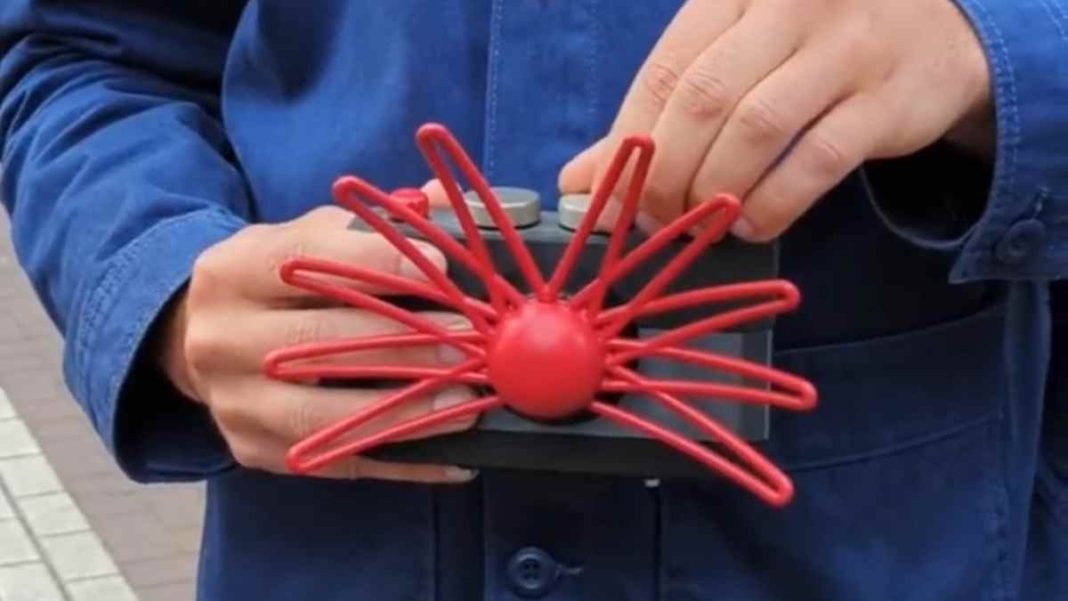NETHERLANDS: In a groundbreaking leap for the world of photography, a futuristic camera called Paragraphica has emerged, challenging the traditional notion of capturing images through a lens.
This innovative camera utilises a combination of location data, time of day, and artificial intelligence (AI) algorithms to compose text descriptions, which are then converted into stunning visual representations.
With its unique design and advanced technology, Paragraphica aims to redefine the way we perceive and share photographs in the era of social media.
Unveiling the Paragraphica
Introducing the world’s first context-to-image camera, Paragraphica is set to revolutionise the photography landscape. The camera arrives as both a physical unit and a virtual device, allowing users to experience its groundbreaking capabilities firsthand.
With three physical dials, users have the power to control various data and AI parameters, influencing the final appearance of the generated images. This concept parallels the familiar operation of traditional cameras with lenses, offering users a sense of familiarity with this futuristic approach.
How does Paragraphica work?
The camera harnesses the power of open APIs to collect location data, including information such as time of day, address, weather conditions, and nearby places. By combining these details, Paragraphica generates descriptive paragraphs, which serve as the foundation for its image creation process.
Through the use of text-to-image AI algorithms, the camera then transforms these paragraphs into captivating photos. According to the creators, these images represent a “complex and nuanced reflection” of the user’s location, offering unique perspectives that may differ from traditional representations.
Controlling image creation
Paragraphica provides users with three physical dials that enable them to shape the resulting images. The first dial operates similarly to the focal length of an optical lens, determining the radius in metres within which the camera searches for data and places it.
The second dial facilitates the creation of a noise seed, essential for AI image diffusion, with adjustable values between 0.1 and 1.
Lastly, the third dial manages the guidance scale, where increasing guidance allows for a more in-depth assessment of the paragraph, resulting in a more accurate and appropriate image.
The hardware and software behind Paragraphica
The camera’s hardware includes a system based on the Raspberry Pi 4, equipped with a large touchscreen, a 3D-printed housing, and custom electronics. On the software front, Paragraphica relies on the stable diffusion API, Python code, and Noodl to drive its powerful capabilities.
This combination of hardware and software ensures a seamless and immersive experience for users venturing into the realm of lensless photography.
A glimpse into the future
With the advent of Paragraphica, photography enthusiasts and social media aficionados are set to witness a paradigm shift in visual storytelling.
This camera challenges the notion that a lens is the sole medium through which images are captured, highlighting the limitless possibilities offered by AI and contextual data.
As Paragraphica’s popularity continues to rise, it promises to redefine our understanding of photography, ushering in a new era where technology shapes the way we perceive and share the world around us.
Conclusion
The arrival of Paragraphica heralds a new chapter in the evolution of photography. By merging location data, time of day, and AI algorithms, this lensless camera produces images that capture the essence of a location from a unique perspective.
With its three physical dials and advanced technology, Paragraphica empowers users to unleash their creativity and redefine the boundaries of visual storytelling.
As this revolutionary photography camera gains traction, we eagerly anticipate the transformative impact it will have on the way we perceive and engage with photography in the digital age.
Also Read: Xiaomi 13 Ultra: A Camera-inspired Flagship Smartphone with Impressive Features



